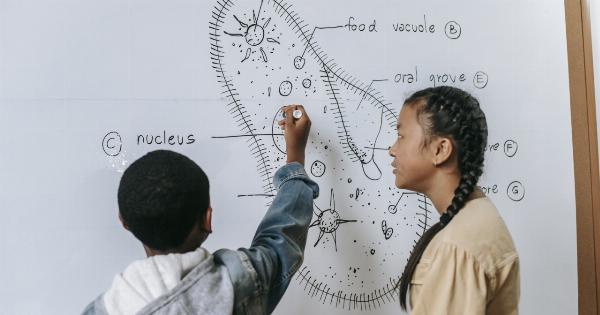Scientists have made remarkable progress in the field of genetic research in recent years. One of the most significant breakthroughs has been the development of a method that can correct the majority of genetic errors.
This revolutionary technique is called CRISPR-Cas9, and it has the potential to cure numerous diseases, including certain types of cancer, cystic fibrosis, and sickle-cell anemia.
What is CRISPR-Cas9?
The CRISPR-Cas9 technology is a gene-editing system that works like molecular scissors to accurately and efficiently cut DNA strands at specific locations.
It uses an enzyme called Cas9, which acts as a molecular scalpel, to snip the DNA in a targeted way. The tool is guided by small RNA molecules that help it to find and bind to precise locations on the DNA.
How Does It Work?
The CRISPR system consists of two components: a guide RNA (gRNA) and a nuclease (Cas9). The gRNA molecule is programmed to recognize and bind to a specific sequence of DNA.
Once the gRNA has found its target, it recruits the nuclease to the site, and the enzyme can snip the DNA at that location. After the DNA is cut, the cell’s natural DNA repair mechanisms can be used to introduce specific changes or “edits” to the genome.
How Can It Correct Genetic Errors?
The CRISPR-Cas9 system can be used to target and correct genetic mutations that cause disease. This is accomplished by creating a modified guide RNA that directs the Cas9 enzyme to the site of the mutation.
Once there, the Cas9 protein cuts the DNA, creating a double-strand break. The cell’s repair machinery then repairs the break, using either non-homologous end-joining (NHEJ) or homology-directed repair (HDR). NHEJ is error-prone and may cause deletions or insertions of genetic material.
However, HDR can be used to introduce a corrected DNA sequence.
How Has It Revolutionized Genetic Research?
The CRISPR-Cas9 technology has revolutionized genetic research in several ways:.
- Efficiency: CRISPR-Cas9 provides a more efficient means of gene-editing than other techniques, such as TALENs and zinc-finger nucleases.
- Accuracy: The precision of CRISPR-Cas9 is unparalleled, making it possible to target specific sections of DNA with a high degree of accuracy.
- Speed: The CRISPR-Cas9 system allows for rapid gene-editing, making it possible to perform experiments with greater speed and efficiency.
- Cost: The cost of using CRISPR-Cas9 is significantly less than other gene-editing techniques, making it more accessible to a wider range of researchers.
What Diseases Can Be Treated with CRISPR-Cas9?
The CRISPR-Cas9 system has the potential to treat a wide range of genetic diseases, including:.
- Cancer: CRISPR-Cas9 can be used to target and destroy cancer cells, making it a potential cure for certain types of cancer.
- Cystic Fibrosis: The CRISPR-Cas9 system can be used to correct the genetic mutation that causes cystic fibrosis.
- Sickle-Cell Anemia: CRISPR-Cas9 can be used to correct the genetic mutation that causes sickle-cell anemia, a blood disorder that affects millions of people worldwide.
- Huntington’s Disease: CRISPR-Cas9 can be used to correct the genetic mutation that causes Huntington’s disease, a neurological disorder that affects cognitive and motor functions.
- Muscular Dystrophy: CRISPR-Cas9 can be used to correct the genetic defects that cause muscular dystrophy.
Are There Any Risks Associated with CRISPR-Cas9?
While the CRISPR-Cas9 system has shown great promise in treating genetic diseases, there are still some risks associated with the technology.
One concern is that the system may introduce unintended mutations or cause off-target effects, which could lead to unforeseen consequences. Additionally, the technology raises ethical concerns, such as the possibility of creating designer babies or genetically modifying animals in ways that could have unintended consequences.
Conclusion
The CRISPR-Cas9 system has the potential to revolutionize genetic research and transform the way we treat genetic diseases.
While there are still risks associated with the technology, the benefits it offers make it one of the most exciting breakthroughs in genetic research in recent years.






























